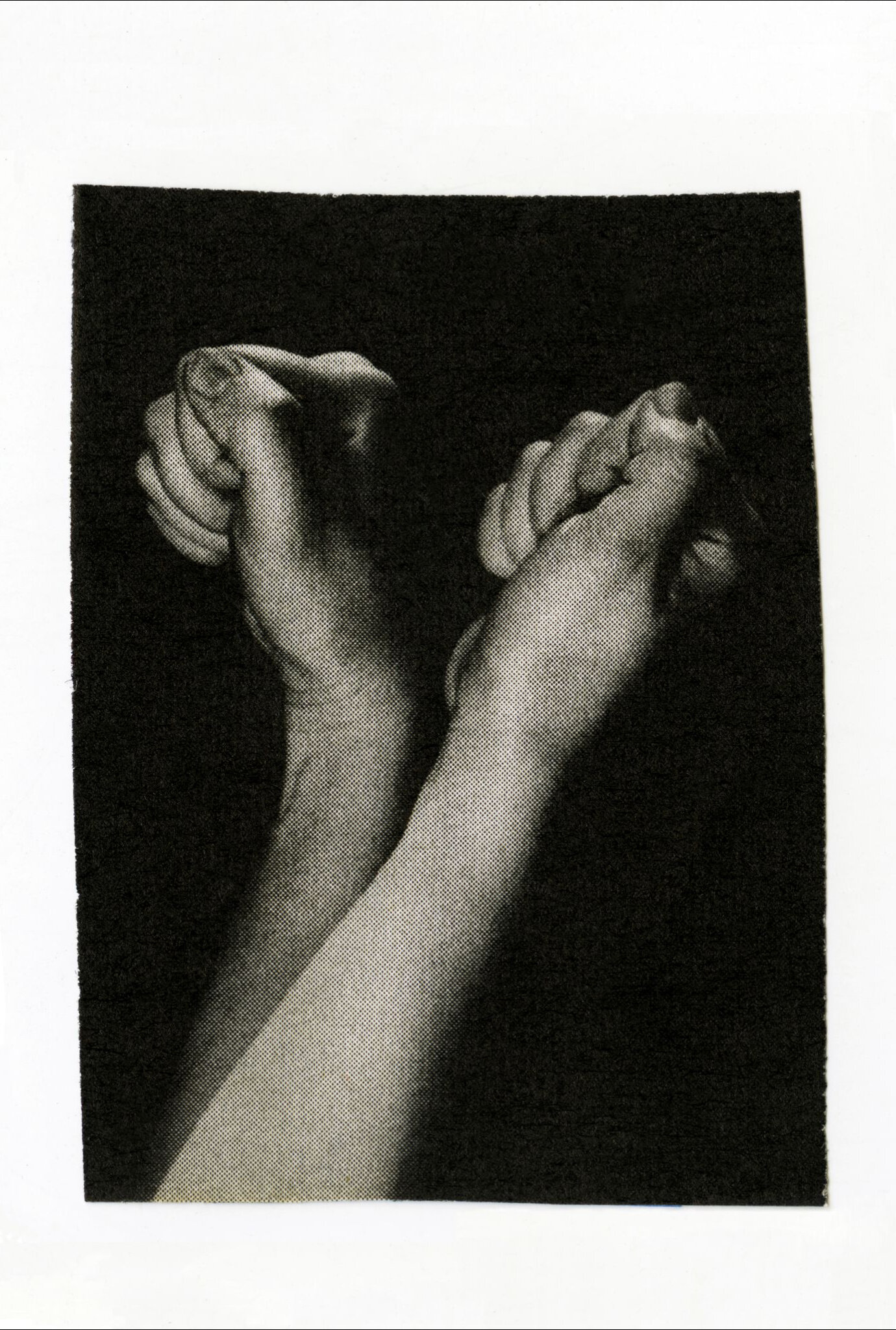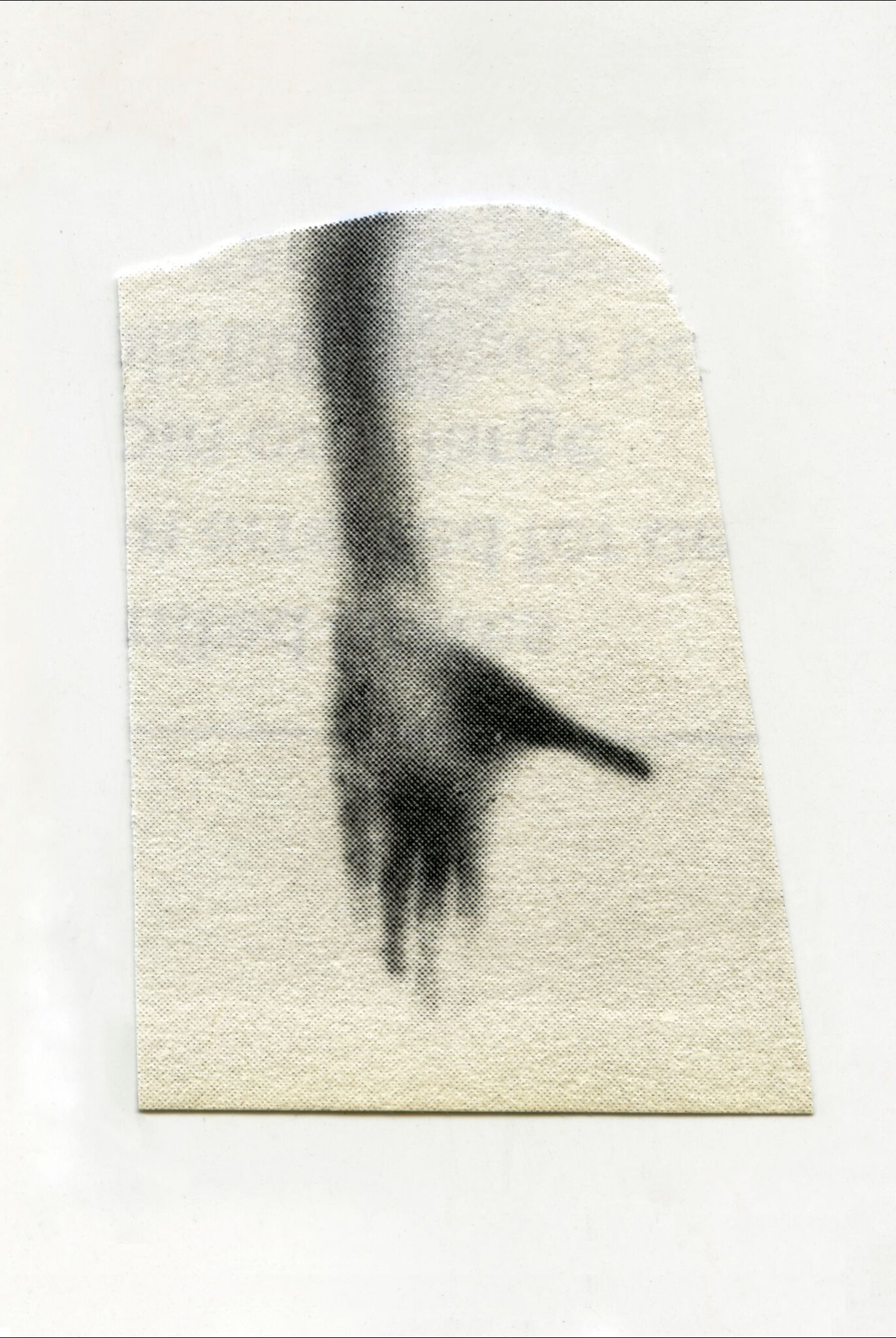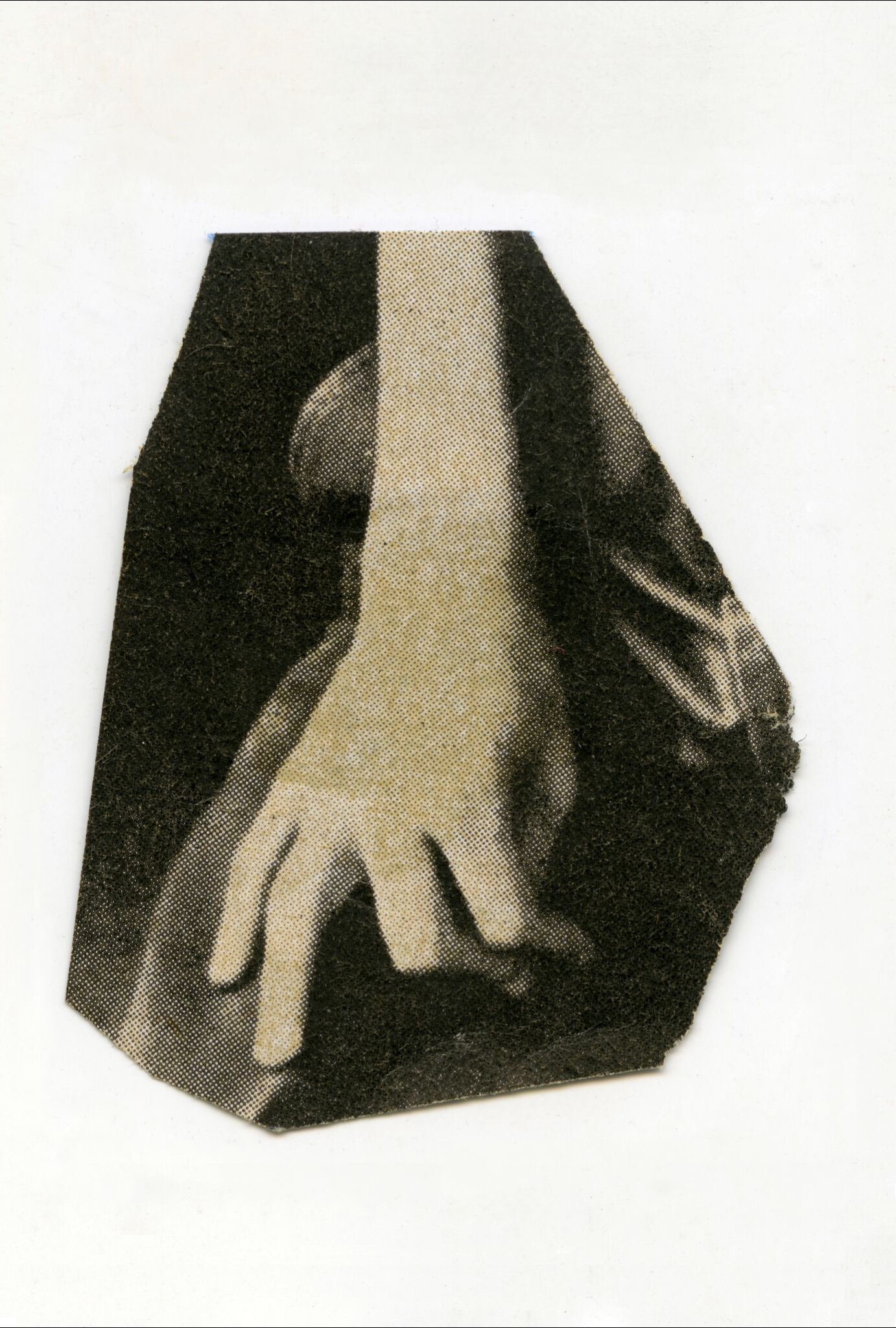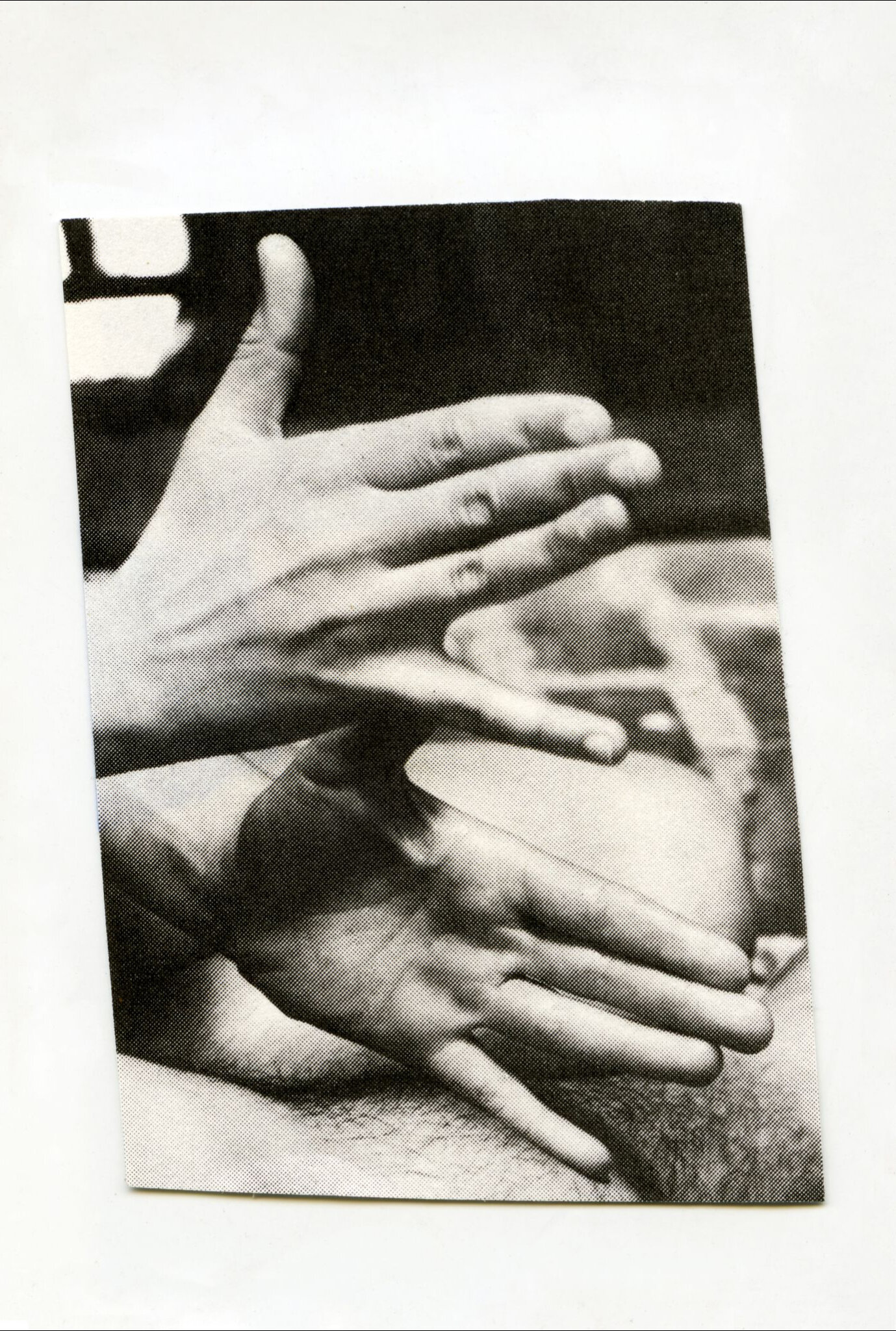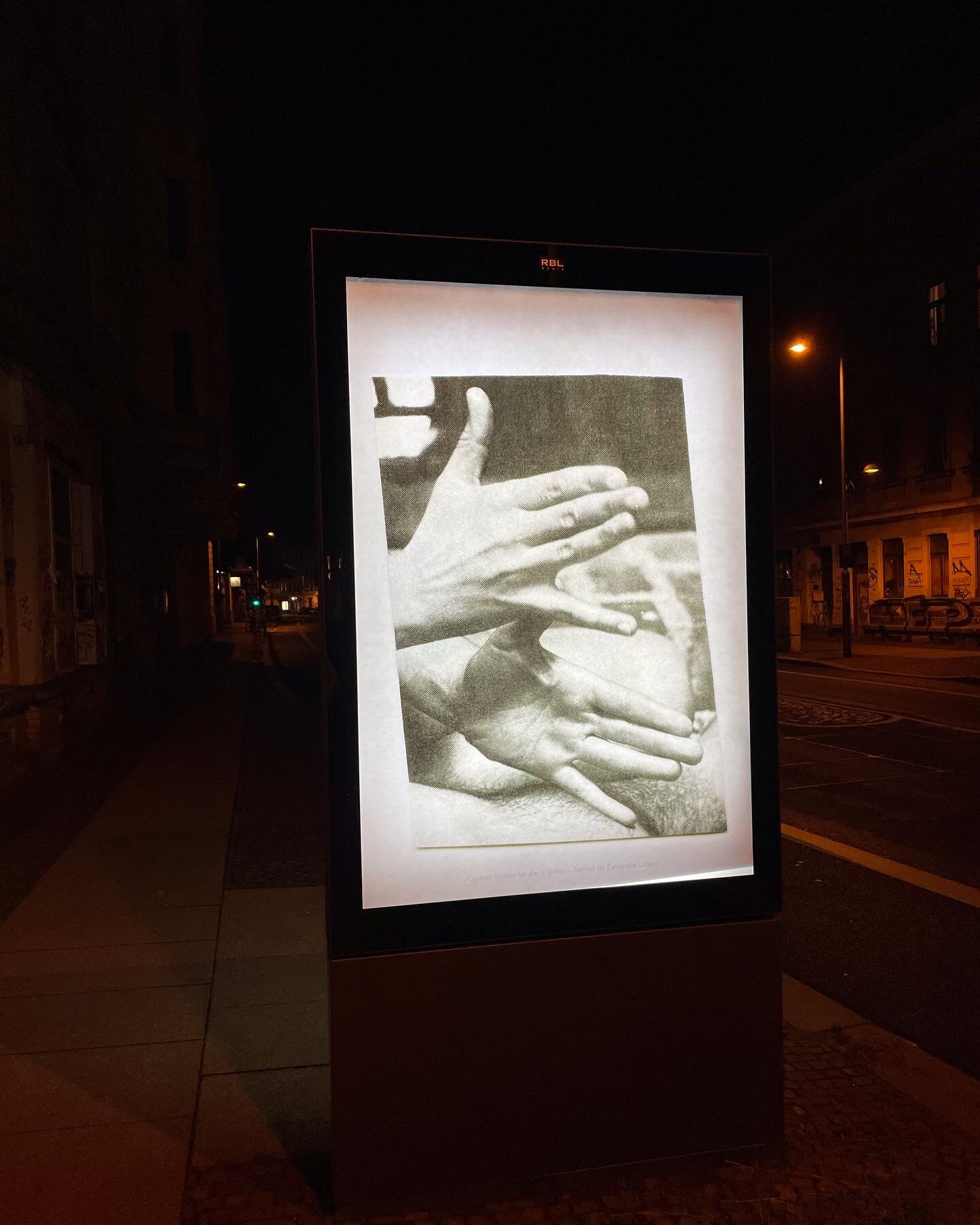HODA AFSHAR, VIKTORIA BINSCHTOK, INGRID EGGEN, LAURE PROUVOST, PAUL MPAGI SEPUYA, CARMEN WINANT, GUANYU XU
By Susan Bright and Nina Strand, curators of f/stop 2021
This edition of f/stop 9 – Festival für Fotografie Leipzig – responds to our new future. The world is still dealing with a pandemic in various states of extremity. We don’t know what the art scene will look like after vaccinations have been completed, variants confined and lockdowns ended. But based on our current environment, we believe that trust is the currency of the twenty-first century. It is at the centre of the COVID-19 crisis, the Black Lives Matter revolution, the #metoo movement, fake news, national elections, relationships with technology, as well as our personal lives. Trust, more than ever, is crucial to the way in which we conduct ourselves on both a personal and a societal level. The timeliness, topicality and relevance of this theme are clear. In terms of scholarship, however, trust is relatively new as an area of study. While in the last fifteen years, research into this area has grown exponentially; it has been argued that trust study offers certain challenges. Most notably these are a lack of general theory on which to base research; no agreed definition of the term (a criticism also levelled at similar sociological and psychological areas such as control, confidence, risk or power) and the impossibility of measuring its success or failure.
It is agreed, however, that due to the complex nature of trust, it is imperative to adopt an interdisciplinary agenda when considering it. Thinkers and authors within each discipline seem to find a definition that fits their field and way of thinking. The Harvard Business Review claims that trust depends on three elements: positive relationships, consistency and good judgment/expertise. Social trust is about transparency of action, continuity of values, and a belief in community. When promises go unfulfilled, a sense of betrayal seeps in to undermine social cohesion. Roughly speaking, trust deals with behaviour that revolves around respect, reliability, reciprocity and responsibility.
It is this complexity and illusiveness of the concept, and the fact that it is both socially embedded in human behaviour and how we organise ourselves, that attracted us to the subject. Like the concept of trust, art resists reductionist assumptions and definitions. For both the digital programme and the physical exhibition, we have invited contributors who are dealing with trust in different ways, all of which invite the audience to consider the concept in regard to issues of consent, artistic agency, computational relationships, faith, the body and personal space. The artists respond to trust with varied approaches and reflect on it in ways that are both personal and societal.
A Festival as a Work in Progress
As curators, we are committed to trying new processes and experimenting with different ways of imagining and building a common space. In order to do this, we saw our role as curators for f/stop as a ‘work in progress’ in many ways. We hope we have extended the possibilities and reach of a festival. By treating the festival as an on-going discourse and mode of reflection, we reached outwards whilst also allowing the festival and ourselves to be challenged by the complex situation of our time.
The events of the past year have meant that all cultural institutions have had to rethink, reimagine and rebuild. Nobody is immune to these changes, and nor should they be. The most obvious shift we have all witnessed in terms of outward-facing events from arts institutions is the increase in online programming. As exhibiting artist Viktoria Binschtok states, 'It’s a special time, during which “business as usual” simply doesn’t work. Digital spaces are all the more important for communication. This is truly the best time to reflect on the networked exchange of images.’
Salma Abedin Prithi, Mundane, 2019 © Salma Abedin Prithi
Our Digital Wonderings program on the f/stop website is an idea taken from Visual Wanderings, instigated on the Objektiv site, where photographers and artists from many different countries are invited to create art that responds to our new situation.Digital Wonderings is a series of online speculations that can take any form. Invited contributors come from a wide range of disciplines and can respond and react to the theme of trust as they wish. Our desire for Digital Wonderings is in line with a progressive cultural agenda that favours collaboration and challenges assumptions. Its approach is interdisciplinary, weaving complexity and humour with seriousness, the vernacular image alongside fine art, and demonstrating a determination to challenge audiences’ expectations of what a festival showcases. At the heart of our curatorial intention lies a commitment to supporting artists, collections and intellectual discovery in order to inspire audiences and comment upon the time in which we live.
One of the contributors to Digital Wonderings is the South African artist Lebohang Kganye. Her photography offers an inventive look into her family’s history, and by implication the wider histories of South Africa from before and during Apartheid. In our interview with Kganye, she explains that, to her, trust is not the absence of doubt, but co-exists with it. ‘Photography is informed by the unconscious’, She adds. ‘Its devices reveal what we don’t normally see – the gaps, the in-between spaces, the loss.’
Another contributor to our online series also dealt with history. We approached Dannielle Bowman after seeing her work for the New York Times Magazine’s ‘one issue’ project, which was devoted to a single topic. It was titled the 1619 Project, named for the date on which the first ship bearing enslaved Africans arrived in the American colonies. For Digital Wondering she contributed with an image she took on this assignment, and her accompanying text recounts visits to Thomas Jefferson’s Monticello estate, first as a pupil in fifth grade, then as a grown up. She asks if we can trust what we remember, and if we can trust what we are told by teachers. She confronts how information is hidden from view.
Bangladeshi photographer Salma Abedin Prithi also deals with what is hidden from view and what is over-exposed in terms of photographic representation. In her series Mundane, she concentrates on the increasingly passive reaction to extreme violence through constant news cycles of hate. This work shifts our attention to the normalisation of violence in her community, where the everyday occurrence of heinous crimes makes such events start to become mundane, and something to which people no longer pay proper attention. In relation to this work, the ideas of the renowned German writer and thinker Jan Phillpp Reemtsma are pertinent. He argues in his book‘Trust and Violence (2008) that discussions of violence either mystify or pathologise it. He claims that violence cannot be comprehended without understanding the concept of trust, and the peculiar balance and relationship between the two.
Seven Positions on Trust
Alongside the online programme, we looked closely into the local situation, and were keen to take the festival into the city centre to exist amongst the lives of the people of Leipzig. We commissioned Carmen Winant to make posters for the City Lights Boards that are located all around the city. She often describes herself as a photographer who doesn’t make her own pictures, and has always been attracted to photography that rejects photography. She moved into working in collage, installation and found images because she is distrustful of how seductive photography can be. This commission started with her collection of images of the hand gestures made by German-born American actress Marlene Dietrich while performing (cut from a book given to her by an elderly neighbour), which then grew to encompass those of thousands of other actresses. In the process, Winant became fascinated by how actresses use their hands as tools of their craft, as instruments of expression and manipulation.
This one and the four on top of the page: Carmen Winant, Posters made especially for TRUST for the 9th edition of f/stop, 2021. © Carmen Winant.
In terms of our theme, these found images of hands seen around the city, and in the main exhibition space, point to the idea of trust in performance. As Winant states, ‘Depending on their orientation, these hands collectively brace for a fall or rise together in unison (in an imaginary classroom, or a court of law). This guided my thinking about trust: it’s the thing we give to the actress, or perhaps something she demands from us, to really feel a performance. It’s something that has the capacity to shape-shift between people, contexts, orientations. And it’s something we do perpetually, together and in exchange.’
In line with recent events, especially those in America following the death of George Floyd, there has been a rise in performing sympathy and virtue signalling. These acts, such as taking the knee, function as a background to the posters. The placement of the hands can be read in many ways. When facing down they appear to be bracing for a fall, an act that Michelle Dent and MJ Thompson in Women and Performance: A Journal of Feminist Theory suggest is ‘that last desperate act of agency we are left with when faced with the terror and tragic beauty associated with loss and grief’. Hand ups is currently more readily associated with conflicts with police than with something more celebratory. Either way, they comment upon human vulnerability and agency.
The motif of the hand can also be seen in the work of Ingrid Eggen and Laure Prouvost. Hands and their associated gestures have long signalled coded messages in art, but with the advent of COVID-19 their significance has been highlighted as touch has become so loaded. The two films by Laure Prouvost shown in TRUST, I Need To Take Care Of My Conceptual Grandad (2010) and Taking Care (Love Letter to Fellow Art Work) (2019) are both part of Prouvost ’s monitor video series, in which, without showing her face, she speaks to the viewer about the object or relic placed in front of her. She makes her hands the main character of the films.
Laure Prouvost, Taking Care (Love Letter to Fellow Art Work), 2019. Video, 3 min 23 sec © Laure Prouvost; Courtesy Lisson Gallery.
The title I Need To Take Care Of My Conceptual Grandad refers to the conceptual relative whom Prouvost claims was a conceptual artist and a good friend of Kurt Schwitters. However, the video also points to the British artist John Latham, a catalogue of whose work she smothers with moisturiser. Latham was an influential artist for Prouvost early in her career. Taking Care (Love Letter to Fellow Art Work)’relates to the former film. This work was originally intended for the gallery space, to be shown on a monitor placed in front of another artwork, to which the ‘love letter’ was addressed. Instead, it was screened on Prouvost’s website and that of her gallery in the spring of the first lockdown last year, offering comfort in these trying times. The camera is focused on her torso and gesturing hands, which appear to be attempting to caress the camera as she whispers soothing words. As a viewer, without the presence of the invisible artwork, it feels as if the caring attention is being lavished on you. Both pieces are acts of love; both place importance on the care of art and artists. Seeing them now, in a time when we are used to being addressed remotely and experiencing disembodied voices, the meaning of these works will perhaps be different from they might have signified before COVID, encouraging us to reconsider the experience, physicality and materiality of art.
Ingrid Eggen, Handl #6, 2020. © Ingrid Eggen
Experiencing work in a changed environment of course alters readings, and it’s hard to imagine a time when art will not be read through the lens of the pandemic. Norwegian artist Ingrid Eggen examines the body’s non-verbal communication and symbolism, often dismantling and distorting body language in her large-scale photographs. She says of the work, ‘I strive to portray a more animalistic body, demonstrating the surreal quest to move beyond the confines of rational modernity. This includes controlled physical and psychological aspects, placed into conversation with bodily reflexes and unconscious desires.’ In a world where emoji’s have come to stand in for complex emotions and feelings, these photographs touch on our involuntary gestures, reflexes and instinct, and the unspoken messages they portray.
It is hard to reduce these actions to simple representations like the quick thumbs-up of an emoji. Instead, they offer another perspective, a potential fracture or opening, and sometimes a pause – a million miles away from the language of social media. They show us the importance of involuntary gestures, and how much is lost in on-screen communication. It is these silent moments between people – a glance, a touch, a flinch, that build human trust and are at the core of relationships.
American Paul Mpagi Sepuya centers reflexivity and collaboration in his practice, creating photographs that emphasize the relationship and trust built between artist, subject, camera, and image. For TRUST, we are exhibiting a small collection of the artist's early portraits and zines loaned from a friend and early supporter in Berlin. Around the time his Dark Room-series was first exhibited in 2017, Sepuya described his practice as the making of photographs, books and installations rooted in portraiture, homoerotic visual culture and the function of the studio: "Portraiture is the foundation of my practice. The subjects appearing in my work are a cast of friends, intimates and muses. They are founded in ongoing relationships mediated by the making and production of photographs."
Paul Mpagi Sepuya, Self-Portrait Waiting II, 2006. © Paul Mpagi Sepuya.
Living in Brooklyn in 2004, Sepuya began photographing a growing community of new acquaintances against the minimal yet charged backdrop of an intimate portrait-studio-meets-bedroom set-up. In these early works, the making of the portrait itself is bound up in the un-fixed relationship between photographer and subject; the "backstage" of the site of portraiture; and the circulation of the images in Sepuya's self-published zine series SHOOT. Across these foundational early works, Sepuya is both making the images of Queer community he wanted to see - a casual, shared intimacy radiating notions of friendship, generosity, romance and creativity - and deconstructing the making of portraiture, the moving of subjectivity and identifying how images are made, seen, and circulate.
The study of trust has roughly fallen into two areas: interpersonal/cultural trust, as we can see so acutely in the work discussed above, and ‘interfirm’ trust, which lies between organisations and the institutional. What the above concepts of the interpersonal and interfirm neglect, however, is how closely trust is tied to faith. These two concepts are so intertwined that it is often impossible to understand where one starts and the other ends. Faith is intangible, invisible and unphotographable. This was the challenge that Hoda Afshar set herself to capture when she visited the islands of the Strait of Hormuz, near the southern coast of Iran.
Within the community that lives here, there is a belief that the winds, generally considered to be malevolent, can possess a person, causing them to experience illness or disease. The inhabitants practice a ceremony to placate these winds and exorcise the sprits from the body. Afshar spent time with the people and their customs, the winds and the landscape. The vast, alien-looking rocks, moulded by the winds over millennia, resemble organic sculptures. In his essay ‘Winds of History’, Michael Taussig refers to the rocks as ‘gods signatures’, as if shaped by the hands of giants. The stories of these often unpredictable winds, their power and their traces left on the people and landscape, are revealed in a mysterious story of faith, history and ceremony.
Using both video and still images, Afshar subtly and intelligently questions and responds to traditional modes of documentary. Fully aware of the Neo-Marxist writings around documentary photography by authors such as Martha Rosler, Alan Sekula, Abigail Solomon Godeau and Alan Trachtenberg that focus on the inclusive documentary form as a critique to the lone photographer bearing witness to the world, Afshar questions the role of the document, the subject, the observer and the observed, and shifts the power relations so commonly associated with documentary photography.
Hoda Afshar, from the series Speak the Wind (2015-2021). Image courtesy and © the artist and Milani Gallery.
Interfirm Trust (or distrust to be more exact) can be seen in the work of Guanyu Xu and Viktoria Binschtok. This is most acutely addressed, in terms of authority, in Xu’s ongoing series Resident Aliens, and in terms of our reluctant trust in the Tech behemoths, in the work of Binschtok. At the heart of Xu’s complex investigation of personal and political history and identity is the figure of the outsider. Resident Aliens addresses the conditions of immigrants in the US, and the lack of any kind of nuance or personalised relationship between the authorities and those labelled ‘resident alien’, ‘immigrant’ or ‘refugee’, which leads to the rise of xenophobia – especially with regard to the Asian community. His photographs are large collages of images of his collaborators’ belongings, domestic interiors, private photographs and pictures from their travels around the world. In these works his aim is to question notions of the familiar and foreignness, belonging and alienation, and the legal status of a person. For immigrants, home is never private and secure, but a perpetually temporary state. The project examines privilege and power and the precarious nature of trust in terms of legality and civic acceptance for those without it. As he states, his practice extends from examining the production of power in photography to the question of personal freedom and its relationship to political regimes.
Xu’s work also highlights the disparities and connections between the US where he lives, and China where he was brought up. In Temporarily Censored Home (2018–19), he made an intervention into his parent’s home in Beijing, intricately layering photographic images all over the house in order to queer the heterosexual space. His film Complex Formations juxtaposes cellphone images taken by his mother during their trips to the US and Europe with 3D animations that Xu made. The video is accompanied by his monologue and a conversation with his mother on the notion of cultural influence and the American Dream.
‘How do we trust the image, and trust the authority of an image representing someone?’, Xu asks. ‘It's really important to actively remind the viewer that these images are constructed. Identity is constructed, and identity is also constantly in flux.’ Similarly, Binschtok highlights the constructed nature of the image by commenting on current patterns of understanding around collecting, consumption, recycling and value that are reverberating in the art world and beyond. What computers can’t deliver, of course, is the material presence of objects. By turning everything into a standard-sized digital image, the variety of scale, materiality, olfactory elements and physicality is lost. Like many of her generation, Bincschtok regain, reframes and thinks of these elements anew.
Guanyu Xu, Space of Mutation, 2018. © Guanyu Xu
The term ‘Networked Image’ was first coined in 2008 by Katrina Sluis and Daniel Rubinstein in their essay ‘A Life more Photographic’. This was one of the first academic works to consider photography online in terms of politics and aesthetics in algorithmic culture and its social circulation and cultural value. As a student of the early 2000s, Binschtok worked at the intersection of digital and analogue and the ideas expressed in that influential essay will have been second nature to her as a practising artist. Having grown up with the Internet, she is well aware of how devices and platforms have remade the world and our understanding of ourselves within it. Her relationship with the digital world is no different from that of the ‘real’ world and there is no ‘digital dualism’ in the way she considers and uses images.
Entering a search term on a computer results in more images than older generations could have expected to see in a lifetime. In this world of digital connectivity, images can be linked in an infinite variety of ways. Working with image-search algorithms Binschtok selects pictures to be matched with others visually. She then materialises these floating images in clusters, demonstrating the random associations that are made between private and public image production online. The individual image becomes irrelevant, while associations and visual similarities come to the fore. Removing any linear narrative, Binschtok points to the seemingly random computational decisions presented, where with every ‘refresh’ there is a new arrangement of information available. The images presented to the artist change daily depending on her location, past searches or spending patterns, illustrating how we are all passively reliant on the institution of Google for information. The visual decisions regarding the final presentation and the selection of the individual images in relation to one another of course lies with the artist. There is poetry in the algorithm’s decisions, but it is Binschtok who makes the intersections, who formalises them and creates new relationships often with comical or melancholy effect.
Viktoria Binschtok, Cherry Blossom / Rostock, 2020. © Viktoria Binschtok & KLEMM'S Berlin.
Curatorial Wonderings
Despite all the technological advances being made, challenges, risks and trust will become increasingly critical for human and technological interaction as the century develops. Trust is the basis around which all of our human relationships revolve and when trust is high, our interactions flow with sensitivity and ease. We consider curating an art that has trust at its core and that involves sharing and exchanging knowledge by placing value in dialogue. As a joint project, our curatorial process comes from conversations, a critical reflection on professional relationships and friendship, a contemplation of the last year and a consideration of positions of interests that overlap and diverge. We consider the curatorial space, both online for the past year, and in Werkschau for the ten days of the festival, a site of collective learning, for the artists, ourselves and the audience, based on relations of partnership, solidarity, sharing, and of course, trust.
Notes:
1 The fast-growing community devoted to researching trust across disciplines and countries includes the First International Network on Trust or FINT, the Centre for Trust Research at SOAS in London, and the Center for Trust Studies at the University of Arizona.
2 See https://hbr.org/2019/02/the-3-elements-of-trust (accessed 23 March 2021).
3 For an overview of the challenges to trust scholarship see, Ping P. Li (2011) ‘The rigour–relevance balance for engaged scholarship: New frame and new agenda for trust research and beyond’, Journal of Trust Research 1 (1): 1–21.
4 From an artist’s statement, May 2021.
5 Visual Wanderings at Objektiv
6 The full Digital Wonderings programme includes: Susanne Ø. Sæther, Onora O’Neill, Nigel Warburton, Lebohang Kganye, Salma Abedin Prithi, Dannielle Bowman, Clara Hausmann, Anthony Luvera, Fred Hüning, Delpire & Co, Whitney Hubbs, Katrina Sluis and Jonas Lund, Carmen Winant, Hoda Afshar, Viktoria Binschtok, Ingrid Eggen, Laure Prouvost, Paul Mpagi Sepuya and Guangu Xu.
7 From an artist’s statement, May 2021.
8 Michelle Dent and M.J. Thompson, ‘Women and Performance’: A Journal of Feminist Theory (2004), Volume 14, issue 1: 6.
9 The use of touch in video art was examined in our third Digital Wondering with the essay ‘Touch/Space: The Haptic in 21st-Century Video Art’ by Dr Susanne Ø.Sæther. She focuses on issues of the haptic in recent video art and the striking motif of the hand touching the screen and forming a distinctly layered spatiality for the viewer. This often creates a mise-en-abyme, especially when viewing on a hand-held device. The examples she uses enfold the viewer, inviting us into the compututational space.
10 From an artist’s statement, May 2021.
11 From the interview ‘On finding your Form’ (accessed 24 May 2021)
12 S. Rowlinson (2009), ‘Interpersonal trust and inter-firm trust in construction projects’, Construction Management and Economics, 27 (6): 539–54.
13 M. Taussig, ‘Winds of History’ (2021) in H. Afshar, Speak the Wind, MACK, London, 2021.
14 In her interview for our second Digital Wondering, British philosopher Onora O’Neill talks about how we think about the term ‘trust’ and how much it has shifted in her field of Bio-Ethics over the last fifteen years. This chimes with the rise in trust studies and the shift in the relationship between doctor and patient. While trust used to be thought of in terms of implicit consent on the part of the patient, a more formalised consent is now considered necessary. Trust has become focused on third-party attitudes and generic attitudes with no discrimination or judgment.
15 From an artist’s statement, May 2021.
16 Daniel Rubinstein and Katrina Sluis (2008), ‘A Life more Photographic’, Photographies,1: 1,9–28. Katrina Sluis was a contributor to Digital Wondering 13, where, in conversation with artist Jonas Lund, she discusses breaking up with photography, the politics of ambiguity, automation and adtech, decentralistion, NFTS/Programming and trust.
17 The term ‘digital dualism’ was coined by Nathan Jurgenson. For an excellent overview of networked images and social photography see: N. Jurgenson, The Social Photo: On Photography and Social Media, Verso, London and New York, 2019.
